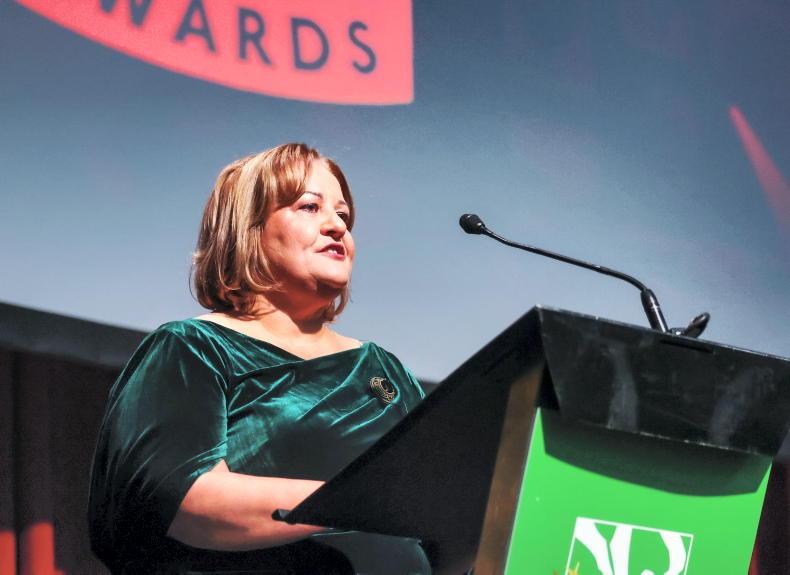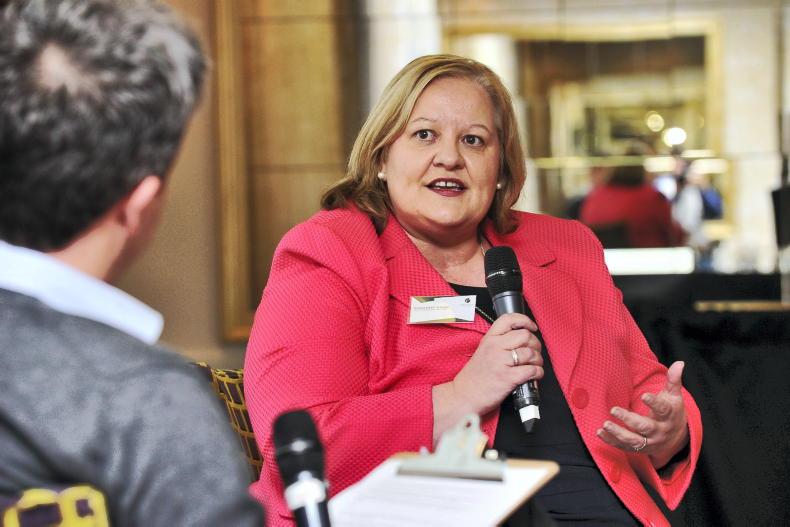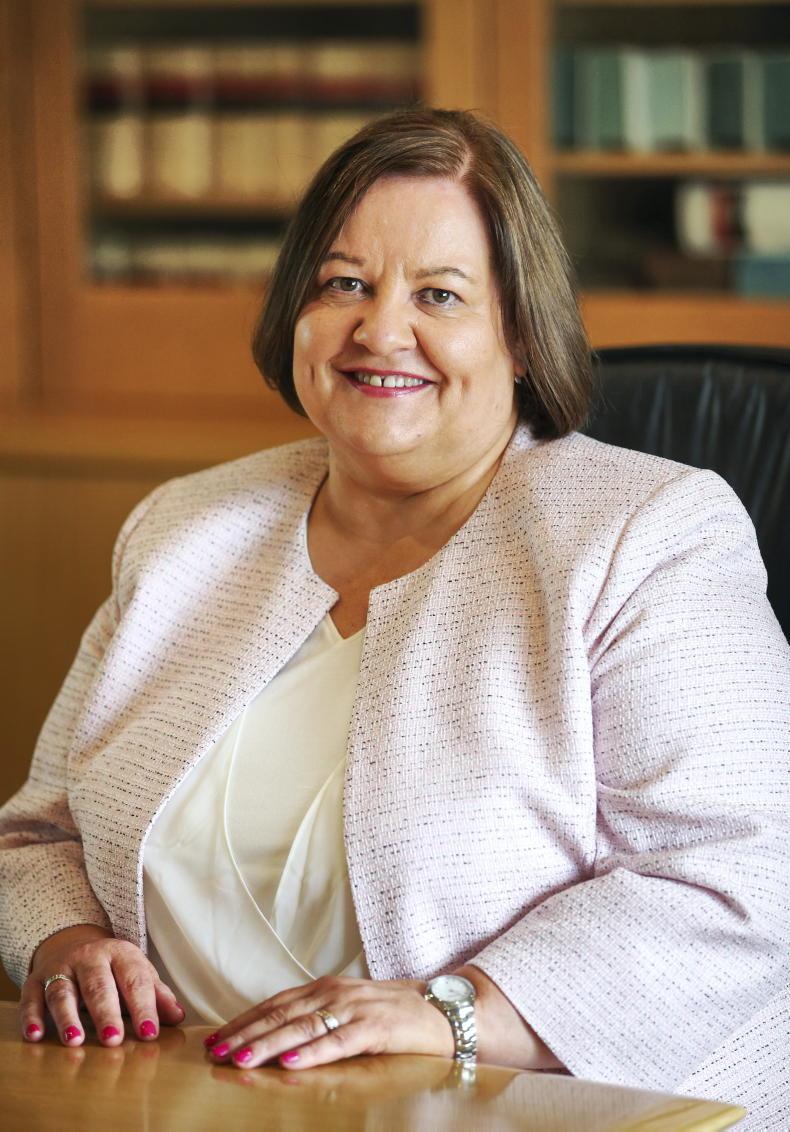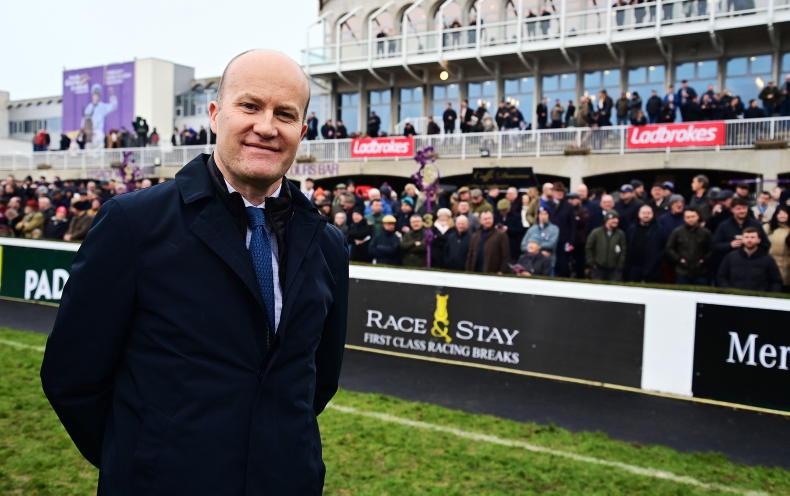SUZANNE Eade has held the position of Horse Racing Ireland chief executive since November 2021 but by far her punchiest public statements in the role were saved for last week.
We have become accustomed to the Co Dublin native rarely veering too far away from a measured tone in her media contributions, but she did not hide her frustration after five racecourses controversially rejected a long-deliberated media rights deal understood to be worth €47 million (over five years).

In response to claims of an “inequitable distribution of media rights funding” and a breakdown in trust between the tracks and HRI, Eade hit out at the five courses when countering: “Any attempt to paint the tender process as unfair, or the distribution model as unjust, is either lacking a basic understanding of the media rights landscape or is misrepresenting the facts.”
The row has continued a demanding period for Irish racing’s administrators, following on from claims of an uneven playing field in terms of doping in recent years, probing from the FAI regarding the level of state funding received by the racing industry, animal welfare protestors becoming increasingly vocal in neighbouring Britain and concerns over small to medium-sized trainers struggling in the shadows of powerhouse operations. On its latest saga, HRI’s media rights committee is now in the process of securing a new deal for the five tracks.
“It’s not my style but there had been lots said in the papers and we couldn‘t respond while the process was ongoing,” Eade says.
“The media rights arrangement is obviously so important for the racecourses, and it’s so important that we stay together. When you fragment things, it’s not as strong as 26 tracks together.
“In any collective deal, there must be compromise. There has to be. We compromised on lots of elements en-route to the deal, as did the other 21. We supported it in that way so it was disappointing to see. I do care a lot about this.
“So much work has gone into it, we’ve taken longer than ever to do this and did a serious invitation to tender, had it independently verified and made sure we were doing the right thing at every step. I’m disappointed they didn’t see it for the benefit of the industry. That’s what I’m all about. If I couldn’t stand over this deal, I wouldn’t.”
’No disadvantage’
One element of the arrangement sees 21 tracks in Ireland continuing to be broadcast on Racing TV, a development that caused a stir in 2018 when a move away from At The Races (now Sky Sports Racing) was announced. Some insist Irish racing is disadvantaged by being kept to a subscriber-only channel.
“No, I don’t believe so,” Eade says when pressed on the matter. “We don’t have evidence of that and media rights have grown significantly.
“The previous deal we had was more than fulfilled compared to what was promised. We’ve been really happy.”
The release on Thursday of HRI’s new report, based on research carried out by Deloitte, comes at an opportune time for the governing body after the FAI last month submitted a separate report to government questioning the means by which Irish racing receives state funding (a total of €72.8 million for 2023).
The headline figure of HRI’s 76-page publication is an estimated Irish racing and breeding expenditure of €2.46 billion in 2022 - up 34% from Deloitte’s previous research in 2016. An increased jobs total of 30,350 also features prominently, as do breeding sector revenues of €819 million, ownership expenditure of €264 million and €193 million worth of racegoer spending.
With the FAI’s report coming in an unusual move where one sporting body or industry effectively calls out another’s merits for funding, was Eade disappointed by the FAI’s challenge?
“To be honest, I don’t have to worry about them - I only have to worry about my own industry and that keeps me occupied,” she says.
“I’m delighted with how this industry is performing in terms of its economic return. The funding we get from the government and owners, it’s coming back in a significant fold. This is the industry I represent so this is what I’m focused on.
“Our funding is voted on every single year. That’s why something like the research conducted by Deloitte is so important in that we can point to what is being returned for the relative level of investment. The stimulus that the government has given us makes people stay invested.

Rural impact
“The other thing is that rural jobs are hard to replace. You wouldn’t necessarily be expecting a Google type of company to move to Ballinrobe but this industry is providing employment rurally. This is also an indigenous skill that needs to be supported.
“The case for supporting the industry is clear. I don’t want that to sound as though there’s any arrogance about saying that. We absolutely don’t take anything for granted. I’m very conscious that we have to keep delivering.”
Eade adds: “When we went to the department on Tuesday night, we got a real positive endorsement from our secretary general. It meant a lot to my team and I to hear that.”
The level of overseas investment in Irish racing is viewed by the HRI chief executive as a key point to emerge from the HRI report, with over €550m of foreign direct investment documented.
However, while the overall figures arguably paint the picture of a booming industry, that is not the reality for many racing operations. From the increased cost of equine feed and bedding to rising fuel and insurance prices, the nationwide cost of living challenge has also landed at racing’s door. Well-equipped staff for specialised roles can be difficult to find on these shores and the gap between trainers at the top and those in the middle tier is growing.
The proposition of capping the number of runners any one trainer can have has been mooted in media discussions in recent times, but Eade suggests such a move is not under any sort of consideration. Does she believe the newly-published, impressive figures accurately reflect where the industry is on the whole?
“The figures are independently verified so I have no problem with those,” she says. “But here’s the dichotomy. You’ve got incredible talent in our training ranks. Globally, these are the best at what they do. They’re attracting lots of very strong owners.
“Someone like Willie Mullins has had an incredible year and we have to recognise that he might be a once-in-a-lifetime type of trainer. I have to acknowledge his incredible achievements, and he’s a big employer. The trickle-down impact of what he does makes its way to people he’s employing in an area that’s vitally important.
“People are choosing to go to him and I can’t interfere with that - nor would I want to. He’s bringing a lot of foreign and domestic investment through. He’s a facilitator of our growth. If he’s got 10 owners to satisfy, I can’t say he’s only allowed to represent two. I think we have to find other ways. You cannot discriminate against owners in that manner. The top owner over jumps [J.P. McManus] spreads his horses around. We have a very strong record of horses winning prize money.
Programme initiatives
“There are things we do, some of it more subtle than others. The Adare Manor Series gives opportunities to those who have had less than a certain number of winners in the past season, though some trainers prefer not to be recognised as having met the threshold for competing in those races.
“In the National Hunt area, we’ve expanded the number of rated novice hurdles and chases, maiden hurdles for horses who were previously unplaced and a series of auction hurdles and bumpers. We’ve done this for horses at the lower levels, while the all-weather track also helps with that. There’s a taskforce in place to look at these things and some solutions don’t come out in one season. We’re continuing to engage with the Irish Racehorse Trainers Association on these topics.”
Eade acknowledges that the middle tier of racing’s structures is in need of some attention.
Take a meeting at Gowran Park next month, for example. A handicap where a horse rated 80 would carry 10st is set to be worth €6,900 to the winner, whereas a handicap for horses rated between 47 to 65 on the same card will see the winner take home €6,000. That means a difference of just €900 between winners who are potentially rated as far apart as 47 and 80.
Eade says: “Here’s the conundrum. We know exactly what amount we need to fill that gap, it’s just a matter of us getting the funding to do it. A lot of this goes back to when prize money was cut during Covid. We know that gap is there and are very conscious of that area. I think it’s the piece we know that if we had some money to put in, that’s where it’d go. That’s the view today, but do you add more fixtures or fill the gap?”

The 2022 and 2023 Irish fixture lists are bigger than ever before with a total of 390 meetings annually. HRI’s report references that the proposed development of a second all-weather track at Tipperary “will see at least 20 additional flat meetings held at the racecourse each year.”
Could we ever reach a scenario where Irish racing is hosting as many as 450 meetings a year?
“Maybe by 2028, we might be close to 440,” says Eade. “Everything depends on funding and the horse population. Field sizes have stood us in good stead; it’s positive for the product. There’s always a balance required to assess what is needed.”
British visitors
With an estimated 27% of all Dublin Racing Festival tickets bought in Britain, Eade views attracting UK racegoers to Irish meetings as a “huge market” for racing in Ireland to tap into.
It also emerged in the HRI report that of the 1.2 million attendees at Irish racecourses in 2022, 47% of the total is made up of festival meetings alone. In fact, seven racecourses accounted for approximately 61% of total attendees last year.
It points to a clear emphasis on driving up interest in racing’s big meetings as opposed to tackling the issue of small crowds at non-major racedays. Irish Champions Weekend has also now been rebranded to be known as ‘Irish Champions Festival’.
“I think what you have to do when dealing with limited resources is decide what your premium meetings are,” says Eade.
“That is something for racecourses to call themselves. They opt to throw everything at their strongest days and we row in behind them. The meetings that are going to be industry days will still make money for us but it’s impossible to throw everything at 390 fixtures a year.”
Two of Britain’s most prominent racedays, the Randox Grand National at Aintree and Coral Scottish Grand National at Ayr, have been targeted for protests by extreme vegan activist group Animal Rising. Their acts to attract publicity have called racing’s social licence into question on some mainstream media outlets.
While similar demonstrations have yet to arise on Irish tracks, Eade says she has sought information from the British Horseracing Authority on their learnings from how the Aintree protests were handled by racecourse officials. Risk mitigation work is also being undertaken in conjunction with the Irish Horseracing Regulatory Board, she adds.
Stand Up For Racing, an independent group recently founded by industry figures Sally Ann Grassick, Kevin Blake, Caoimhe Doherty and Cathy Grassick, has assembled a pool of racing media personalities to provide balanced commentary when the industry is cast into the spotlight in media circles, and the organisation’s presence is undoubtedly a welcome one.
However, given mounting pressures on racing from certain external factions, should the message from HRI be stronger when it comes to stating racing’s case?
“That’s what the research conducted by Deloitte is about,” Eade insists.
“We started this in January so we were already making sure to put our best foot forward because this industry has loads to be proud of - including how it treats its animals. We talk about welfare a lot more than we ever did, and that is a good thing. It’s a priority. I know how well cared for these horses are. There’s an awful lot of work that gets unseen around welfare.
“The main thing for me is getting through to your friends who aren’t anti-racing but are ambivalent. They’re the people you want to make sure the right message gets across to, that they understand what actually goes on. People on the extreme are entitled to their view and are unlikely to have their opinions changed, but it is that middle ground we have to make sure about.
“Doing a social and economic impact report highlights what we are doing. We get a lot of questions on welfare and respond to them truthfully, but you can never do enough in this arena. To go and continuously have arguments would do nothing for the industry.
“We try to be proactive about our messaging - that’s more important. Let’s demonstrate and highlight what we do. If people see what actually goes on, I think it’s more powerful than words in this particular area.”




 This is a subscriber-only article
This is a subscriber-only article
 It looks like you're browsing in private mode
It looks like you're browsing in private mode












SHARING OPTIONS: